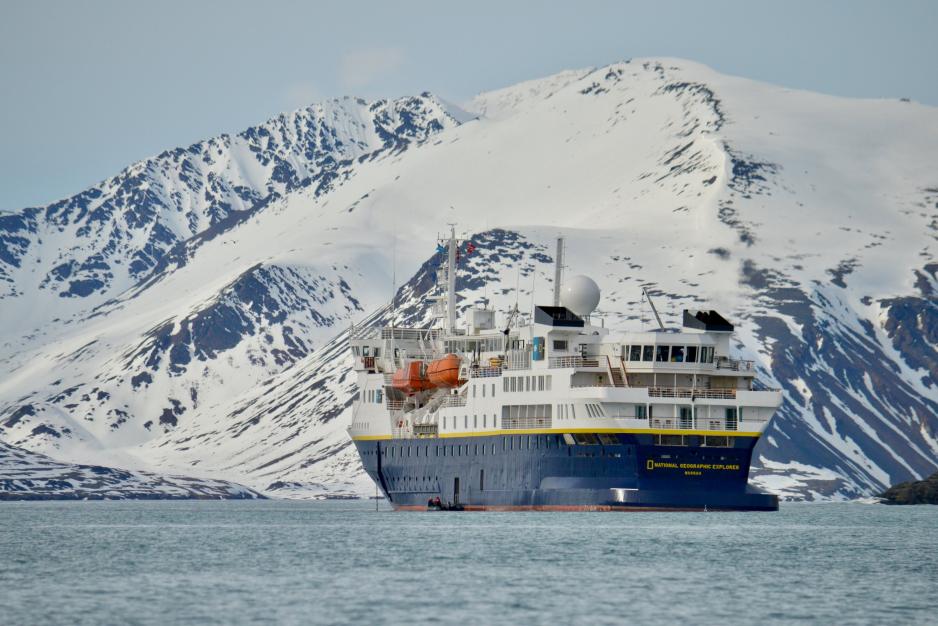IMO, Arctic states face criticism over a weak HFO ban
Environmental advocates and Indigenous peoples’ groups criticized the ban as insufficient and called on Arctic states to pass stronger regulation on their own.

The International Maritime Organization’s Marine Environment Protection Committee moved to ban the use and carriage of heavy fuel oil in the Arctic Ocean on Friday. The ban is expected to be formally adopted by the full IMO assembly next year.
The regulation, however, has repeatedly been criticized by environmental organizations as too weak due to a number of loopholes, which will allow Arctic states to continue using HFO until mid-2029.
“In its current form, the ban will achieve only a minimal reduction in HFO use and carriage by ships in the Arctic in mid-2024, when it comes into effect,” says Sian Prior, lead advisor to the Clean Arctic Alliance.
[Loopholes in a proposed Arctic HFO ban seriously weaken environmental protections, a new report says]
The new regulation allows Arctic states to issue waivers to their flagged vessels, delaying the ban until the end of the decade.
“It is now crucial that Arctic coastal states do not resort to issuing waivers to their flagged vessels,” adds Prior.
HFO is the heaviest and most viscous type of residual fuel oil which, in case of an accidental spill, would be very difficult to clean up in the cold waters of the Arctic. This type of fuel is already banned in the waters around Antarctica. HFO is also a key source of black carbon emissions which have a strong regional warming effect when dark soot particles settle on white snowy surfaces resulting in increased heat absorption and ice melt.
Too late and too many loopholes
The use of HFO in the Arctic is so common that it accounts for 80 percent of marine fuel carried in the Arctic. The effect of the now-approved ban will be very limited according to researchers. It will reduce the use of HFO by only 16 percent and the carriage by only 30 percent.
Due to a number of loopholes, nearly three quarters of Arctic shipping will be able to continue with business as usual.
“A ‘ban’ that affects just a quarter of ships is not a ban at all”, says John Maggs, Senior Policy Advisor at Seas at Risk.
“The IMO’s new regulation fails to treat all flags equally, allowing the five central Arctic coastal states to issue waivers that will allow all ships flying their flag to continue to use HFO,” he continues.
Ships with “protected” fuel tanks will not require waivers and will be allowed to continue operating with HFO. As older ships get decommissioned and are replaced by newer ships with built-in protected fuel tanks, the amount of HFO used and carried in the region may actually increase in the future, rather than decrease.
“The use of HFO in the Arctic is likely to continue to grow until the ban takes full effect in 2029 — so not only does the ban not sufficiently protect the Arctic, it’s actually contributing to a greater exposure to the risks associated with the use of heavy fuel oil,” says Prior.
Need for stronger regulation
Environmental groups now urge IMO members to strengthen the ban prior to the final vote. They also point to unilateral initiatives to ban HFO in domestic Arctic waters, such as Norway’s recent proposal to eliminate the fuel from waters surrounding Svalbard.
“The IMO’s decision to approve this weak HFO ban will force us to find other ways to protect the Arctic”, said Alexey Knizhnikov, responsible industry program leader at WWF Russia.
Russia in particular is a focal point for organizations like the WWF. The country accounts for the vast majority of Arctic shipping and has only weak safety rules in place along the route without proper enforcement.
In 2017, the last year for which Russia made data available, more than 100 vessels violated safety of navigation rules along its Northern Sea Route. The country also seeks to further soften the ice-class requirements along the route allowing vessels with no or less ice protection to travel through its Arctic waters.
A major land-based oil spill on the Taymyr peninsula earlier this year further highlights the dangers of oil use in the Arctic and inadequate safety regimes.
A missed opportunity
The IMO’s decision was also heavily criticized by representatives of the region’s Indigenous Peoples.
“Today’s International Maritime Organization decision is a massive missed opportunity to provide urgently needed protection for the Arctic and Indigenous Peoples who rely on those waters,” says Mellisa Johnson, Director of the Bering Sea Elders Group, based in Alaska.
The group points out the HFO “ban” is a misnomer and will likely result in confusion and let the wider public assume that the Arctic will now be protected from the risks of HFO, when in fact the use of this type of fuel will remain widespread in the region.
“We cannot wait ten years to stop HFO use in the Arctic. Ten years is simply too long to wait,” Johnson concludes.